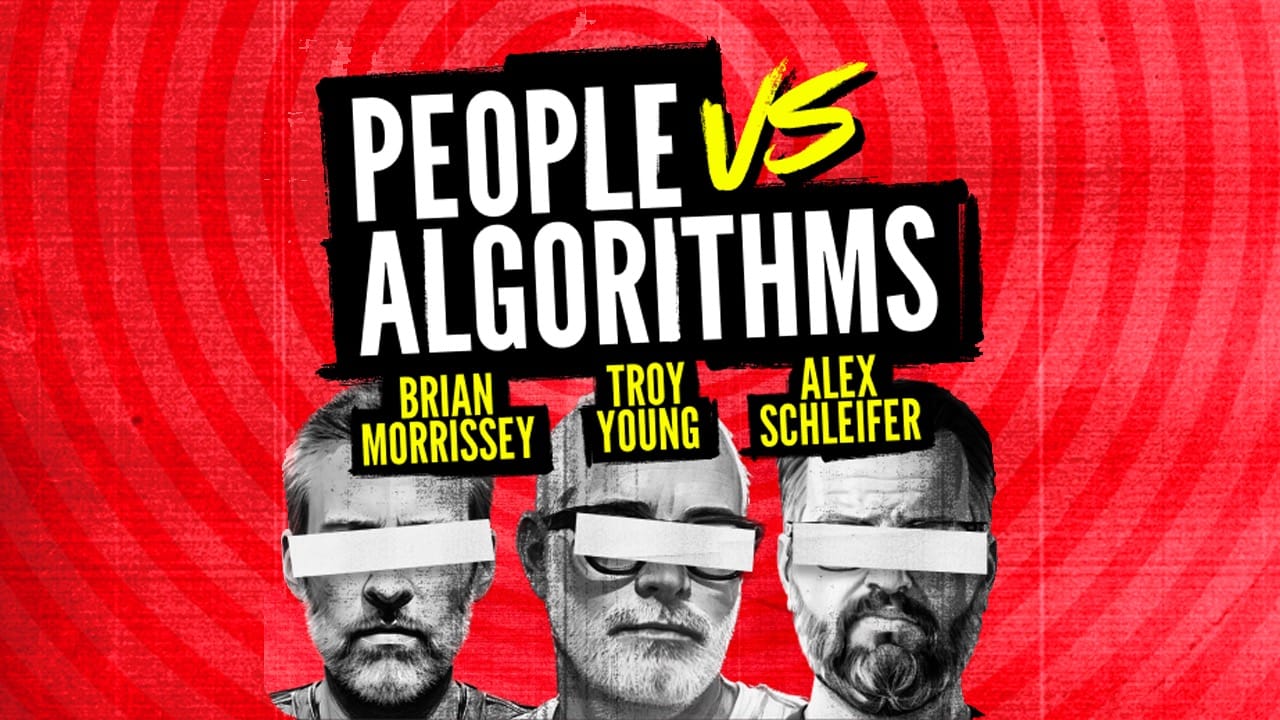The transaction layer
Impression-based media wanes

This week: I spoke with Metro’s director of audience Sofia Delgado on increasing traffic by publishing less, and with Troy on the challenge of publishers getting to the transaction level.
A few things to know:
- Join me on Tuesday, Dec 10, for The Rebooting Show Live, a podcast and networking event at Gannett | USA Today headquarters in New York. I'll be joined by top Gannett executives for a deep dive into how the publisher is using AI effectively and responsibly. We’ll start with cocktails and networking at 5pm with the podcast event starting at 5:30pm and networking afterwards. The event is free to attend. Register here.
- Only 27% of respondents say that their site deploys vertical video, according to research The Rebooting did in collaboration with EX.CO, and of these just a little more than half (53%) produce those vertical videos themselves. Those that don’t deploy vertical video cited a variety of factors, with production budgets/resources heading the list (38%) followed by such disparate factors as the lack of ad demand and difficulty of tech implementation. Get the full report.
- The Rebooting surveyed 38 publishers to better understand their first-party data strategies. Publishers told us 37% of their audiences are identifiable, and over half of respondents said they have identity data on less than 25% of their audiences. Get the full report.

Headed to CES?

EX.CO, the machine-learning video platform powering video strategies for the world’s top media groups, will be in Vegas to share what they have in store for 2025. From innovations in CTV and DOOH to advancements in their online video platform (OVP) for publishers, they’re offering an exclusive sneak peek. Join EX.CO for dinner, drinks, or a meeting in their branded suite to explore how they’re shaping the future of video. Don’t miss this opportunity to chat with their video experts.
Finding traffic in the more with less era
In retrospect, the traffic era was a lot like the zero-interest rate policy era: It led to a lot of bubbles. The easy-traffic era created incentives for publishers to push out as much content as possible to feed the algorithmic machines at Google and Facebook. Times have changed. And just as the overall economy has struggled to adjust to a higher-for-longer era of interest rates, publishers have needed to adjust their strategies.
Even if profits are the ultimate goal, traffic remains a leading indicator for revenue at most ad-driven publishers. At Metro, the free London newspaper, the comedown from the traffic era was jarring. At the end of 2022, with Facebook turning off the traffic taps to news and a Google update hitting, overall traffic dropped in half, Metro’s director of audience Sofia Delgado told me in a conversation at WordPress VIP Innovation Showcase in London.
“We had a newsroom that came of age in the era of Facebook,” she said. “We had a lot of bad habits and we were used to doing things quickly. Suddenly that wasn't working anymore.”
The publisher pulled off a feat: By focusing on what was working, it has managed to increase its traffic by 50% by producing 25% fewer pieces of content.
Listen to the full conversation on The Rebooting Show on Apple | Spotify | other podcast platforms
The transaction layer

Much of the economic function of publishing has been upstream of transactions, operating in the somewhat vague world of brand building while leaving the direct marketers to crowd around the transaction. Looking back, it was inevitable the internet would collapse brand and demand, compressing those in the middle.
The world of “impression-based media” is suffering. Magazines are classic impression-based media. Hearst cut 200 people last week, Dotdash Meredith laid off 53 people, mostly in print.
"Impression-based media that serves an audience largely free of charge where advertising sales organizations go out and sell access to that audience, is under tremendous pressure, probably never going to come back,” Troy Young, Hearst’s former president, said on our latest episode of People vs Algorithms.
The best place to be in publishing now is as close to the transaction as possible. It’s no surprise that Hearst is focused on its far less sexy B2B operations, which inherently are more directly tied to transactions than consumer media. Dotdash Meredith is cutting in print, but it expanded digital revenue by 16% year over year in the third quarter, with IAC CEO Joey Levin crediting its D/Cipher data-targeting tool that it plans to bring to other publishers.
Getting to the transaction level is far more difficult in consumer media that lacks strong intent signals. Instagram including shopping content is seamless – and people are closer to shopping mode. That’s not the case for most publishers. For a while, affiliate operations were working, until Google decided that many publishers were engaged in “parasitic SEO.”
It turns out many publishers became the ultimate mansplainers. They could be business and finance publications yet have expertise in hair dryers. Many publishers relied on third pirates for this content. Google’s crackdown has been typically chaotic, hitting some publishers hard and leaving others mostly unscathed. The message from Google: Stay in your lane.
The site-reputation abuse crackdown has reinforced the dictum of digital media: If you don’t control your distribution, you are not in control of your business. Should Forbes recommend pet insurance? How about life insurance? Google can effectively deplatform a publisher for violating a set of rules kept intentionally vague.
“Google doesn't love this transaction layer that sits between them –the navigator, the place where people start a journey, the ultimate influencer of where you go – and the commercial entity,” Troy said.
Watch PvA on YouTube, or listen on Apple | Spotify | other podcast platforms
Thanks for reading. Send me feedback by hitting reply or emailing me at bmorrissey@therebooting.com




